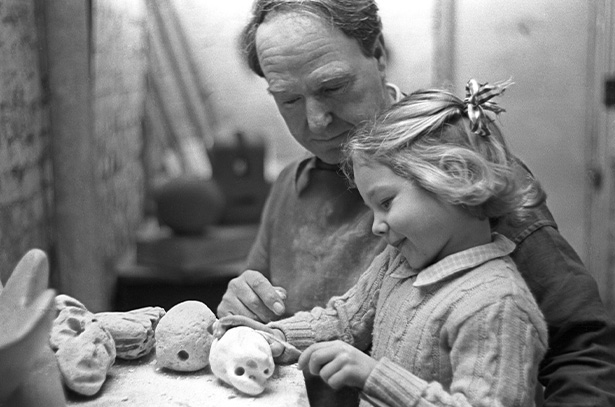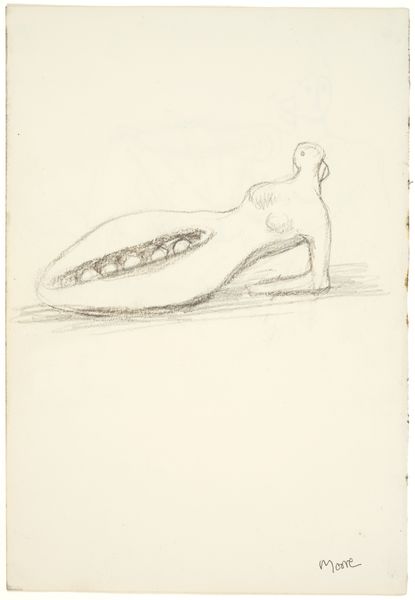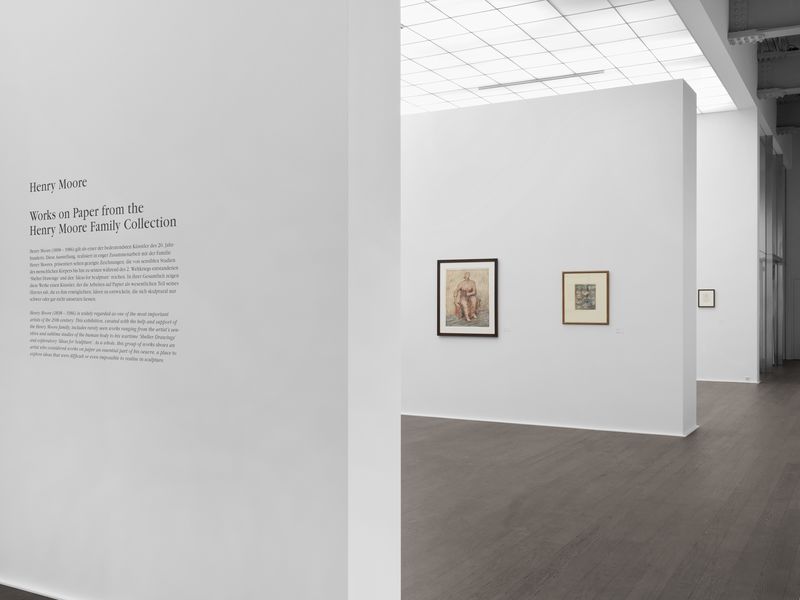
Henry Moore
Works on Paper from the Henry Moore Family Collection
27 March - 29 May 2010
Zürich
Installation views
About the Artist

Henry Moore
The human figure, enigmatically isolated or in relationship with others, is both the stimulus and the crux of all Henry Moore’s works. For him, creating his sculptures was not so much an abstract exercize in looking at the human figure, but a personal investigation and violation of the artist’s own body: ‘When I carve into the chest,’ he commented, ‘I feel as if I were carving into my own.’ In 1943, Moore was commissioned to carve a Madonna and Child for the Church of St. Matthew, Northampton; this sculpture was the first in an important series of family-group sculptures. Moore's large-sized abstract sculptures can be encountered in numerous international public places (like Reclining Figure, 1956–58, UNESCO, Paris). Overlooked sometimes, are his fascinating drawings, often inspired by poetry and mythology. For his works on paper, Moore received important stimuli from so-called primitive art from Africa, the South Seas and Egypt, but at the same time from contemporaries such as Picasso and Giacometti. Hovering between abstraction and figuration, Moore developed his own unique language of form.
Born in 1898 and originally from West Yorkshire, Moore studied at both the Leeds School of Art and the Royal College of Art in the 1920s. Before World War II Moore’s works were widely exhibited in his home country, in the 1940s he also started to gain international success. In 1946, Moore's radical vision on sculpture was celebrated in his first international retrospective at the Museum of Modern Art in New York. In 1948 Moore represented Great Britain at the 24th Venice Biennale and won the International Prize for Sculpture for his participation the same year. In 1963 the artist was awarded the British Order of Merit. To this day, Moore is celebrated as the most important British sculptor of the twentieth century for his particular addressing of the human form and uncompromising vision, which make him an abiding influence for contemporary artists.
Together with his daughter Mary Moore, he established the Henry Moore Foundation in 1977, which administers his works. Since his death in 1986, the interest in his work has only continued to grow: in 2015 Moore’s works were presented at National Roman Museum in Rome and in 2017 he was the subject of a solo exhibition at the Arp Museum Bahnhof Rolandseck, Germany. At Tate Modern, London, two rooms are dedicated to display over 30 of his works.
Current Exhibitions
1 / 12




















